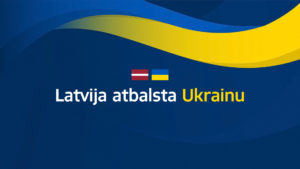
Project title: New Spatial Development Zone for Border Regions of Latvia and Russia – Connecting Potentials of Two Countries
Programme: Interreg III A North priority (ERDF, Tacis)
Project number: NIV-093
Project acronym: Remote Access
Project objectives
Project general objective is to promote sustainable spatial development in the project territory by creating new spatial development zone and introducing new approaches for development of the remote Baltic Sea region/European Union border regions, thus making contribution to the balanced polycentric development of the Baltic Sea region.
Project has 3 specific objectives:
- to do a current situation analysis about the transport, goods/cargo and people flows through the project territory and to work out the common spatial development strategy (SDS) for all the project territory (new spatial development zone);
- to build up a sustainable cross-border cooperation network that unites partners of national, private and nongovernmental sectors on national and regional level with a purpose to foster coordination and information exchange over the administrative borders, thus promoting planning of balanced and coordinated development of project territory;
- to make up a basis and work out the justification for the further development of transport and logistics services in the project territory.
Project territory
Project territory includes Latgale and Vidzeme Regions in Latvia as well as Pskov and Leningrad Oblasts in Russia.
General information about the project
The eastern and north-eastern part of Latvia (Latgale Region and a part of Vidzeme Region bordering on Latgale and Russia) and the western part of Russia territory (Pskov Oblast, Leningrad Oblast) are in similar geopolitical situation – comparatively far from the development centres of the countries, just in border territories. In spite of the repeatedly expressed necessity of the political level for promotion of polycentric development and improvement of remote regions’ access to the markets as well as regional and national centres, also fostering cooperation between EU and Russia border territories, the questions concerning development of these regions have not been in the focus of general authority for a long time.
The objective of the project “New Spatial Development Zone for Border Regions of Latvia and Russia – Connecting Potentials of Two Countries”, acronym Remote Access, is to develop potential of the common spatial zone. To provide the achievement of this goal, one of the project activities (alongside with researches about transport flow and infrastructure layout) is working out the common spatial development strategy (SDS) of Latgale and Vidzeme Regions, Pskov and Leningrad Districts. The common SDS objective is to make up integrated structure for development of the border regions involved in this project for the next 15-20 years on. SDS will integrate physical and geographical dimensions of partner’s existing strategies as well as embrace innovative development solutions.
Despite the fact that there is a lot of spatial development planning documents both sides the border, their existing versions poorly reflect the potential of common development – Latvia as EU external border, Russia as potential WTO member state. Currently, the project territory from the point of view of cross-border cooperation is seen as zone for transit traffic (that has increased in the recent years), economically poorly integrated and without rapid development dynamics. At the same time being in the point of intersection of goods and people movement to East-West and North-South directions determines the most extensive development facilities. However, these facilities are to be justified by clear understanding of situation and development tendencies as well as definite figures.
Problems are more effective to solve by cooperation of regional and national institutions both sides the border. However, there is no such network yet. There is a clearly seen claim to have common spatial development strategy that might provide balanced regional development.
Project target groups
Project target groups are the population living in the project territory (in the development zone territory), cooperation partners of regional, national and multinational level/ int. al. producers, non-governmental organizations, service providers, social partners as well as policy makers.
Project partnership
Lead partner of the project is Latgale Region Development Agency. Other project partners are as follows: Vidzeme Development Agency, Administration of Pskov Oblast, joint-stock company “Region Expo”, North-West Russia Logistics Development Centre ILOT. For more information about the project partners look in the section “Our Partners”.

